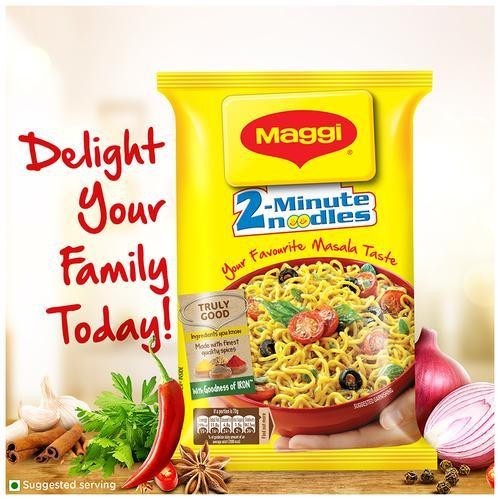Even though instant noodles were aliens to the Indian public in 1983, Nestle developed a market worth INR 937 crores and has led the industry ever since, despite fierce competition. So, how did Nestle get to the top of the food chain?
People began to explore a cheaper food alternative throughout the 1950s, as Japan struggled to recover from the terrible effects of World War II. This led to an increase in the demand for noodles. However, because the preparation time for noodles was considerable, this resulted in huge queues. This led to Momofuku Ando devising a cheaper and faster way to create noodles, and after hundreds of prototypes, he was ultimately able to produce what we now know as Instant Ramen Noodles. As Japan’s economy accelerated, it became clear that the country was on the verge of a boom. The fact that quick noodles sold in enormous quantities despite costing nearly six times as much as regular noodles demonstrated the desire for them. Instant Noodles were quickly exported to other countries, including the United States.

All of this was extensively examined by Nestle, which recognized the Instant Noodles industry’s potential as well as its impact on the Japanese market, although Nestle decided not to pursue Japan as a target market. The fact that Japan was not liberalized meant that Nestle would have a difficult time operating efficiently in Japan; another reason was that Japan’s market was highly competitive, and Nestle would have to fight to stand out. They chose to enter markets where there was no competition and establish a monopoly. Nestle entered the Indian market in 1983, and that’s when India became noticeable on the charts.
Even though instant noodles are a cuisine that can be consumed by anybody, Nestle chose to promote the product to a select group of people since they realized that targeting everyone would result in them being unable to sell to anyone. That’s when they decided on two target groups: mothers and kids. Nestle chose to focus on the audience’s pain and interest to grasp their interest. Nestle targeted both working and home-maker mothers equally by promising healthy and easy-to-cook food for their children.
The popular tagline ‘2 Minutes Noodles’ helped Maggi establish itself as a product that can be cooked quickly and easily, allowing moms who are often exhausted by the amount of work they have to do to choose it as a handy option. Nestle also addressed students directly by sponsoring quizzes and giving them gift baskets. Nestle also began handing out samples to the general public and advertising during prime-time children’s programming.

Nestle distinguished out from its competitors for various reasons, the most important of which was its 25-year-old supply chain. Maggi’s widespread distribution allowed it to be found in tier 3 and tier 4 cities, and as a result, consumers knew the product as ‘Maggi’ rather than instant noodles. Nestle also created smaller packs of the product and advertised it in regional languages to appeal to a wider audience. They used their networking to ensure that they reach over 2.2 million outlets across the country. This ensured that they had an emotional connection with the public.
Although, in 2015, Maggi received a lot of criticism after lab tests found that it had a lot of lead and MSG. For five months, Maggi was unavailable in stores. Maggi re-entered the market after this time and launched the ‘We Miss You Too’ campaign. People shared their experiences about how much they missed Maggi as part of this campaign, which was a big success. By 2017, Maggi had a staggering 60% share of the instant noodles market
The clever marketing of Nestle made Maggi a household name, and it has retained that position ever since. This teaches us several lessons such as:
- Clearly Define The Market Into Which You Want To Penetrate Into
- You’ll Wind Up Selling To No One If You Try To Sell To Everyone
- Determine Your Audience’s Suffering And Interest. Pay Special Attention To That.
- Products Are Sold By Good Brands. Emotions Are Sold By Great Brands
